
Not as majestic as Gia Long Tomb , not as bold as the new innovation like Khai Dinh Tomb, Thieu Tri Tomb is quiet but elegant, nestled between the hills and mountains of Hue dreaming with impressive architecture.
The tomb of King Thieu Tri, also known as Xuong Lang, is the resting place of the 3rd king of the Nguyen Dynasty. This is one of the most famous mausoleums in Hue. On December 11, 1993, the work of this complex of relics of the ancient capital of Hue was recognized by UNESCO as a world cultural heritage.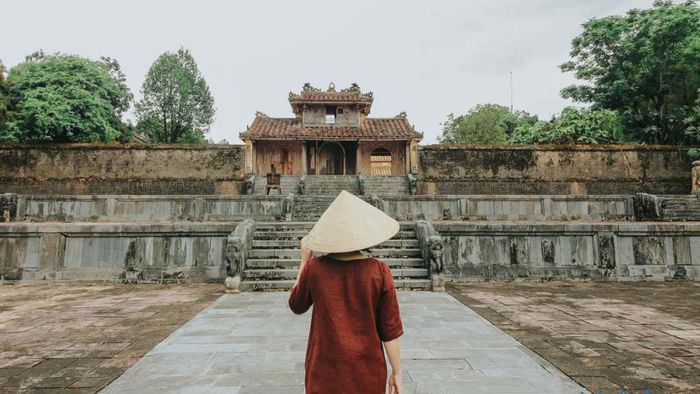 The mausoleum of King Thieu Tri is cool and quiet. Photo: Bazantravel
The mausoleum of King Thieu Tri is cool and quiet. Photo: Bazantravel
In terms of structure and architecture, King Thieu Tri’s mausoleum has many similarities with Gia Long’s tomb and Minh Mang’s tomb, but the work still has many unique features, because it is drawn and selected from the experience of building mausoleums from two people. The previous king’s life can even be considered unique. The mausoleum has lush green orchards as a natural barrier instead of the surrounding protective La citadel paintings.
The special location of Thieu Tri Tomb
Location: Xuong Lang is located in Cu Chanh village, Thuy Bang commune, Huong Thuy district, Thua Thien – Hue province, about 8km from Hue Citadel. Panoramic view of King Thieu Tri’s mausoleum. Photo: dulichconvoi
Panoramic view of King Thieu Tri’s mausoleum. Photo: dulichconvoi
The mausoleum of the third king of the Nguyen Dynasty is modestly hidden among the vast heaven and earth of Hue, leaning against the foot of Thuan Dao mountain, surrounded by lush rice fields and green gardens stretching from Perfume River all the way to the famous Lim wooden bridge recently built. More impressive and different is the Xuong mausoleum facing the Northwest – the direction was not used when building palaces or mausoleums of the Nguyen Dynasty.
Here is a detailed guide on the way to the tomb of King Thieu Tri: Among the mausoleums in the ancient capital of Hue, the mausoleum for the third king of the Nguyen Dynasty is quite clear and easy to go and you can completely rely on Google Maps to get there. place. If you start from Dien Bien Phu street, you run to the end of the road, until you meet the Nam Giao flock, you will soon arrive at the king’s mausoleum. In addition, visitors can also ask people for specific directions if they are afraid of getting lost.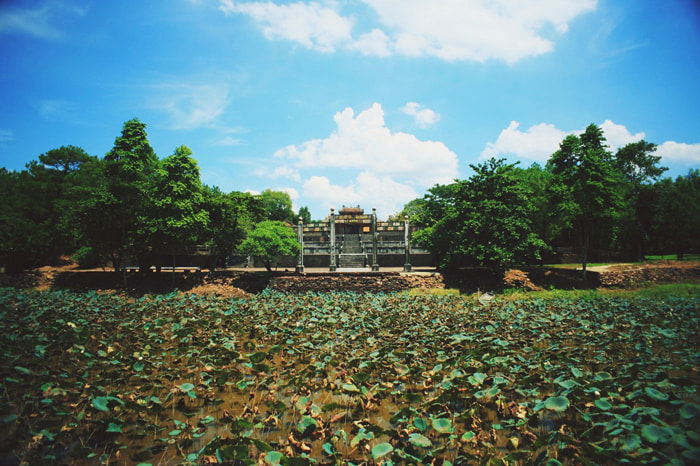 Forgotten beauty. Photo: dulichhue
Forgotten beauty. Photo: dulichhue
When should you visit Thieu Tri Tomb?
If you are wondering what is the best season to travel to Hue , the answer is around January to April every year. This is also the most suitable time to visit Xuong Lang. Because the weather in Hue at this time is very pleasant, the climate is not too hot and the rainy season has not yet come.
The population of King Thieu Tri’s mausoleum is not too large, so it only takes visitors 1-2 hours to explore and learn about this place briefly.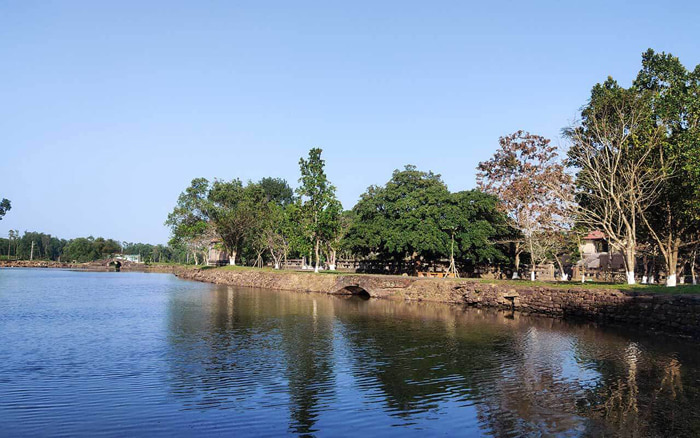 Part of the Xuong Lang campus. Photo: laque.vn
Part of the Xuong Lang campus. Photo: laque.vn
Ticket prices and opening hours:
Currently, the latest updated ticket price to Xuong Lang is:
– Adults: 150,000VND/ticket
– Children from 7-12 years old or from 0.8 – 1.3m tall: 30,000 VND/ticket.
– Children under 7 years old or under 0.8m tall: free entry. Remember to bring your identification.
King Thieu Tri’s mausoleum welcomes guests on all days of the week, from Monday to Sunday, open from 7:00 a.m. to 5:30 p.m. daily.
The process of building Thieu Tri Tomb
King Thieu Tri ascended the throne in 1841, alias Nguyen Phuc Mien Tong (1807 – 1847), was the third king of the Nguyen Dynasty, the eldest son of King Minh Mang.
Although he had a short time in office, only 7 years, the king fell ill and died on November 4, 1847, but he also had many merits, the most memorable being the construction of dikes and dams across the mouth of the Mekong River. An.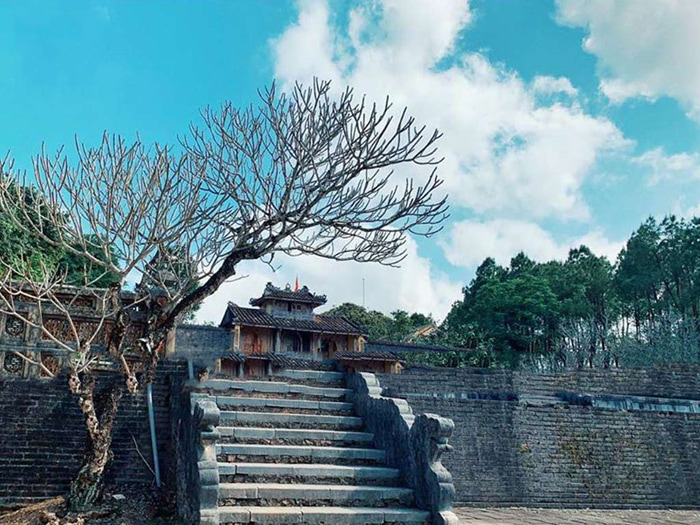 King Thieu Tri was the eldest son of King Minh Mang. Photo: smiletravel
King Thieu Tri was the eldest son of King Minh Mang. Photo: smiletravel
Because of his early death, when he was alive, the king did not build his own mausoleum, so when he died, his body was buried at Long An Palace – Bao Dinh Palace for 8 months. Until King Tu Duc ascended to the throne of his father and began to build Xuong mausoleum.
The mausoleum of the third king of the Nguyen Dynasty was started construction on February 11, 1848 and took 10 months to complete.
The king once advised his eldest son, who is also King Tu Duc later, that: “The land for Son mausoleum should be chosen at the foot of the mountain which is convenient so that the militiamen can easily do the work. As for the underground passage to bring the coffin to the grave, starting from Hieu Lang, we should imitate it. As for the power of the palace, which is built for the purpose of concurrently, it is not advisable to build many temples and waste money on the resources of the people.”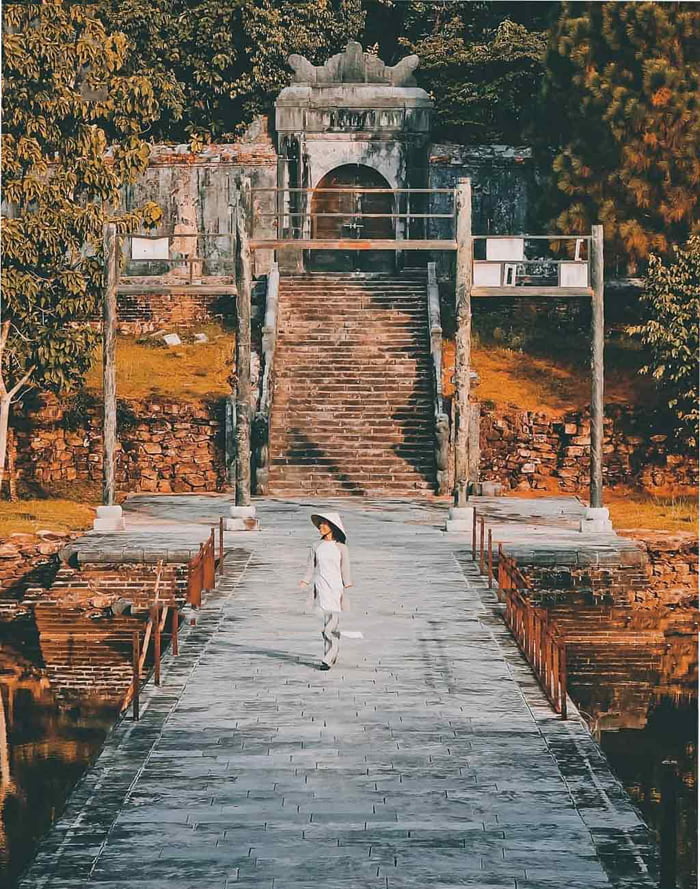 Xuong Lang is similar to Thien Tho Lang in that there is no La Thanh. Photo: metrip
Xuong Lang is similar to Thien Tho Lang in that there is no La Thanh. Photo: metrip
Unique structure and architecture of Thieu Tri Tomb
Like the top 4 most beautiful mausoleums of Hue , in general, Xuong mausoleum includes two main areas of mausoleum and mausoleum. But like Gia Long mausoleum, King Thieu Tri’s mausoleum does not have La citadel, but only the area where the tomb and the palace are located separately, parallel to each other. To the right is the mausoleum, Nhuan Trach lake is located in front and through the sewer system. underground and connected to Ngung Thuy lake in front of Buu Thanh but connected to Dien lake in the impregnating area. This arrangement creates a “chi Xuan Thuy” that flows around the mausoleum area.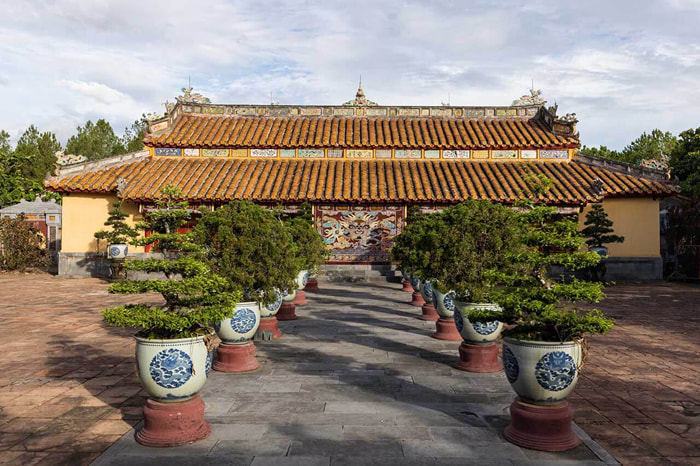 German Telegraph. Photo: laqua.vn
German Telegraph. Photo: laqua.vn
Right behind Nhuan Trach lake is the bronze Nghi Mon leading directly to Bai Dinh (also known as the courtyard) large with two rows of stone statues on the left and right sides. These statues represent the typical 19th-century art of erecting statues in Hue.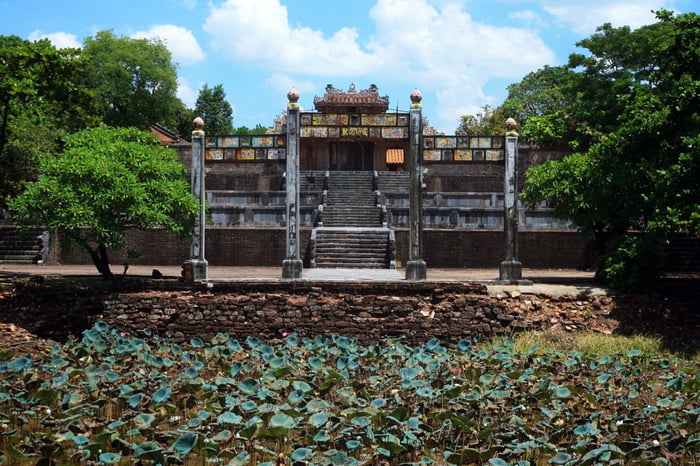 The impregnated shaft has an electric pool in the front. Photo: dulichhue.biz
The impregnated shaft has an electric pool in the front. Photo: dulichhue.biz
The work of the complex of Hue monuments also has a stele house and Duc Hinh floor located on a curved hill shaped like a tortoiseshell. Over the years, Duc Hinh Lau has collapsed but the stele house (also known as Bi Dinh or Phuong Dinh is still there, engraved with 2,500 words of King Tu Duc praising the merits of his father Thieu Tri. Matches in the roofs of Bieu Duc and Hong Trach Mon palaces. Photo: vntrip
Matches in the roofs of Bieu Duc and Hong Trach Mon palaces. Photo: vntrip
Guests traveling Hue , passing Stop Thuy lake will turn over three bridges is the chief Middle (middle), Dong Hoa (right) and West Dinh (left) to the tertiary entered into Buu. This is where the body of King Thieu Tri is located. If you look further to the right of the mausoleum, you can also see the Hien Quang tower. This is the resting and contemplation of the king in both the yin and yang realms.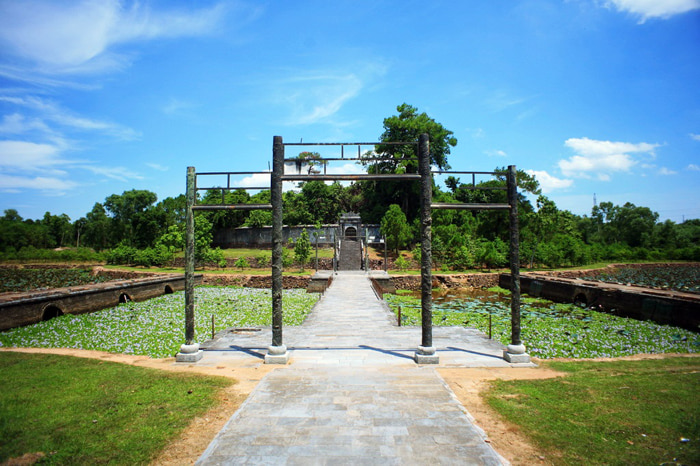 Ho Ning Thuy. Photo: dulichhue
Ho Ning Thuy. Photo: dulichhue
In the main hall, there is a special feature that above the matches on the roof and at the Hong Trach door, there are over 450 crosswords engraved. These cells have elaborately carved poems of literary and educational value. There are also a number of auxiliary works that add to the sanctity of the main hall such as Ta Huu Phoi Palace (front) and Ta and Huu Tung Vien (rear) located around Buu Duc Palace.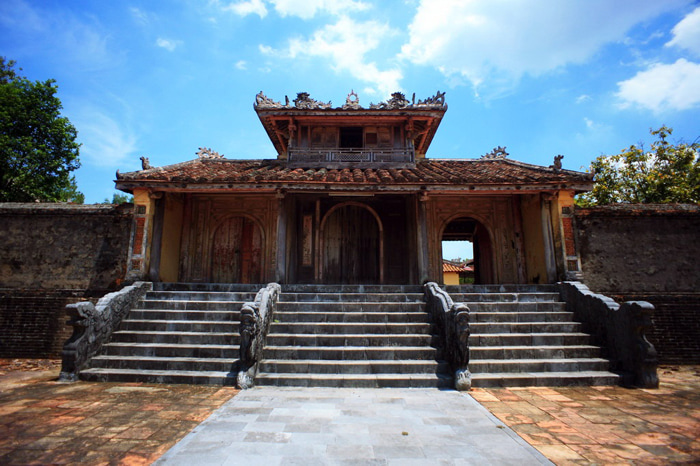 Hong Trach Mon. Photo: vntrip
Hong Trach Mon. Photo: vntrip
With all of the above characteristics, King Thieu Tri’s mausoleum is considered a selective compromise of two architectural models of the two predecessors’ mausoleums.
In addition, in the premises of Thieu Tri Tomb, there are 3 other royal tombs. It is Hieu Dong mausoleum of the king’s mother – Mrs. Ho Thi Hoa, lying in the front, Xuong Tho Lang of the king’s wife – Mrs. Tu Du is located near the back left, the mausoleum “Tao Thuong” ie the tombs of the king’s children. Thieu Tri died at a young age lying front left.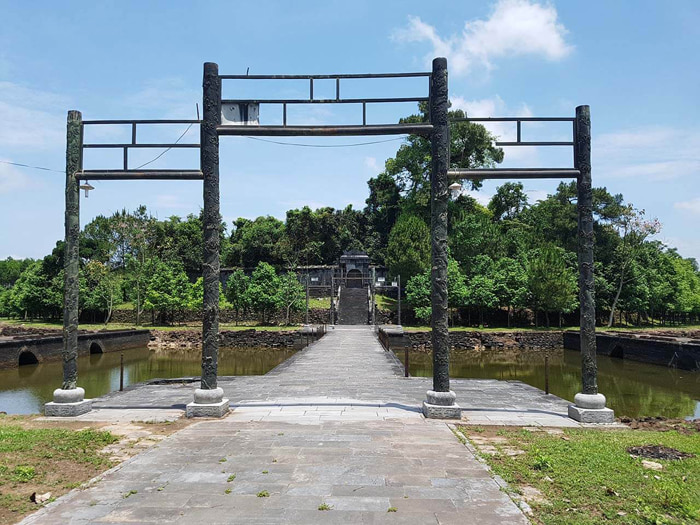 The area “tomb” in the tomb of King Thieu Tri. Photo: vntrip
The area “tomb” in the tomb of King Thieu Tri. Photo: vntrip
In terms of feng shui, King Thieu Tri’s bone mausoleum could both “paint only water” and face the northwest direction, different from most major architectural works in Hue Imperial City at that time. Besides, Vong Canh hill is located about 1 km from the mausoleum, Ngoc Tran mountain is located on the left side, so the position is “left long, right tiger”.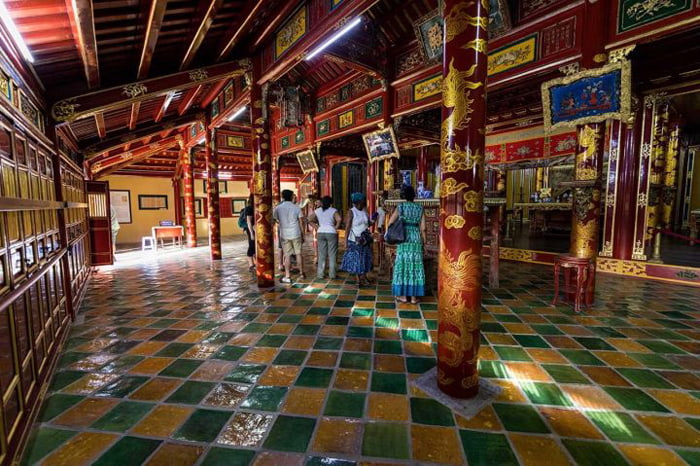 Inside Bieu Duc Palace – The place to worship King and Queen Tu Du. Photo: laque.vn
Inside Bieu Duc Palace – The place to worship King and Queen Tu Du. Photo: laque.vn
About 8 km away, there is Cham mountain standing as a “prejudicial case” for the mausoleum area. Meanwhile, Bau Ho cave is closer, keeping the natural front for the impregnated area. Behind, the posterior occipital is a large mound of land, in the distance is Kim Ngoc mountain. In the mausoleum, there are three semicircular lakes: Dien Lake, Nhuan Trach Lake, and Ngung Thuy Lake, along with the stream from Thuy Tien Lake – today an abandoned park in Hue running to the right, and then merge together. by underground sewers built hidden under the walkways.
Thieu Tri Tomb has a simple but solid architecture, clearly showing the depth and serenity between the cool and quiet mountain space with the arrangement of main and auxiliary works in harmony with nature. If you have the opportunity to come to the ancient capital, do not miss the opportunity to visit this unique complex of mausoleums, it will be a very different experience than checking in other beautiful places in Hue .
Photo: Internet
